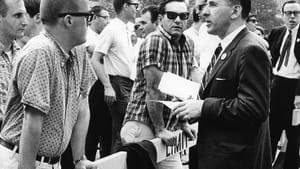Stay in the Loop
BSR publishes on a weekly schedule, with an email newsletter every Wednesday and Thursday morning. There’s no paywall, and subscribing is always free.
The quiet beginning of the gay rights movement
Speaking Out for Equality at the National Constitution Center

June is LGBT (Lesbian, Gay, Bisexual, Transgender) Pride Month in the United States, and every American city of consequence celebrates with parades, festivals, block parties, conferences, or forums — and lots of dance parties, of course. Given the historical importance of the Stonewall riots in New York in sparking the modern Gay Pride movement in 1969, would it surprise you that the first public demonstrations for gay rights predated Stonewall and occurred here in Philadelphia in 1965?
To celebrate the 50th anniversary of those demonstrations, the Constitution Center has partnered with the William Way Gay & Lesbian Community Center to create an exhibit detailing the progress of the LGBT community’s fight for equality over the last 50 years. The timing could not be better, given that the Supreme Court is poised to rule on nationwide marriage equality within the next few weeks. Meanwhile, other battles for gay rights on other fronts seem stalled, if not actually facing defeat.
The exhibit — Speaking Out For Equality: The Constitution, Gay Rights, and the Supreme Court — may sound dry, but it is a largely engaging historical document. It covers the fight for gay rights, starting with the first Annual Reminder demonstration in 1965 up to the present day, with an emphasis on the Constitutional issues that have served as the basis for numerous court cases. The dry historical facts are presented in a breezy, entertaining way that emphasizes the personal costs the struggle has exacted.
A quiet start to the revolution
The Reminder Demonstrations predated the Stonewall Riots of 1969, which are usually credited with sparking the modern Gay Pride Movement. The demonstrations ran from ’65 to ’69 outside Independence Hall, starting with 40 brave individuals marching with signs calling for society to protect the rights of homosexuals (the term “gay” was not in widespread usage yet). The conservative dress of those early demonstrators sparked the spirited debate that rages to this day between those who want to work more quietly inside the system for change versus those more in-your-face, confrontational activists inspired by Stonewall — similar to the split in the civil rights movement between the followers of Martin Luther King and Malcolm X. While the flashier Stonewall Riots have historically overshadowed the Reminder Demonstrations, this exhibit makes a credible argument that the earlier demonstrations, and the activism they inspired, were just as influential in the subsequent battles for gay rights as the livelier (and more violent) Stonewall event.
The exhibit itself is a fascinating time capsule that illustrates the drastic changes in attitude this country has experienced in the last 50 years. One video display (cutely shown on a period TV screen) shows excerpts from the famous 1967 CBS News documentary The Homosexuals, hosted by Mike Wallace, which serves as a perfect example of the poisonous attitudes most Americans held toward gays at the time. This was complemented by another video display showing excerpts from more recent movies and TV shows, such as Soap, Glee, and All In the Family, as well as Ellen DeGeneres’s famous coming-out episode. The change in attitudes over time is astonishing, and will be eye-opening, especially for younger gays and lesbians.
History for the ADD
While the exhibit is impressive in its breadth, it’s lacking in depth, as if the archivists geared things primarily for an audience suffering from attention deficit disorder. For instance, the exhibit mentions Frank Kameny, a government scientist who was fired in 1957 because he was gay. He brought suit and lost, and eventually his appeals reached the Supreme Court in 1960. The Court declined to hear his appeals, a decision that radicalized Kameny, turning him into one of the early movement’s most influential activists. However, I couldn’t find any further information on Kameny’s story. I was also curious about how many people in addition to Kameny lost their jobs under Executive Order 10450, the rule used by the government to legally justify Kameny’s termination. When was the executive order rescinded? My curiosity had to go unsated.
I have to give high marks to the archivists for laying out in a clear and educational fashion many of the constitutional issues involving gay rights, especially on the eve of what might be a landmark decision from the Supreme Court on marriage equality.
However, the educational value of the exhibit rises in direct proportion to one’s youth. Because of a certain lack of historical depth, the older you are, the more likely this exhibit is less an educational experience and more an opportunity for historical and sociological nostalgia — still important, still interesting, but perhaps not as groundbreaking as its creators hoped it would be.
What, When, Where
Speaking Out for Equality: The Constitution, Gay Rights, and the Supreme Court. Though January 3, 2016 at the National Constitution Center, 525 Arch Street, Philadelphia. 215-409-6600 or www.constitutioncenter.org.
Sign up for our newsletter
All of the week's new articles, all in one place. Sign up for the free weekly BSR newsletters, and don't miss a conversation.
 Gary L. Day
Gary L. Day